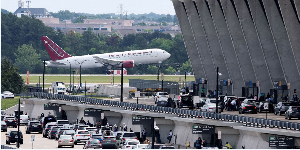THE Bank of Ghana (BoG) has defended the performance of the cedi, saying the currency remains competitive and is one of the strongest amongst its peers within the emerging market economies space.
Governor of the bank, Dr Ernest Addison said the Ghana cedi had in the last year performed better than its peers.
He observed that while the cedi depreciated by 4.7% last year, the South African rand depreciated by 15.7% at the same time; the Indian rupee depreciated by 10%; the Turkish lira depreciated by 42% while the Brazilian real depreciated by 18.32%.
“In the year to September 20, the cedi cumulatively depreciated by 7.3%, performing better than observed in peer emerging market economies; in the same period last year, the currency depreciated by 5.5% against the pound and euro,” the governor told the media during the press briefing to announce the decision of the bank’s 84th Monetary Policy Committee (MPC) meeting yesterday in Accra.
The governor, at the press briefing, announced the MPC had decided to maintain the benchmark interest rate at 17% citing likely inflationary pressures from recent increases in prices of petroleum products, exchange rate depreciation, effects of recent increases in taxes and pick up in global inflation.
“The cedi remains competitive as indicated by developments in the real effective exchange rate. The real effective exchange rate, in trade-weighted terms, remained within the desired band, indicating that they are broadly aligned with the underlying fundamentals.”
According to Dr Addison, the strengthening of the US dollar in the international markets had exerted pressure on currencies in emerging market economies, including Ghana; however, “the reason we have depreciated by 7.3% and not 42% in Turkey or 18% in Brazil is because we have stronger economic fundamentals”.
The exchange rate, the governor maintained, had responded positively to the improvement in the economic fundamentals.
“Last year, the cedi depreciated by just 4.7%, and in fact up to the end of May this year, the cedi appreciated by almost 0.7% until the emerging market problem started,” Dr Addison stated.
Significant turnaround in economic fundamentals
He maintained that it was important to see the significant turnaround that Ghana had recorded in the macro-statistics, “given where we started from two years ago, with a large budget deficit of about 9%; as of last year, it had been reduced to 6%, meaning a 300 basis point fiscal consolidation.”
According to him, over the same period, policy rate had dropped from 25.5 to 17%, meaning 750 basis points reduction in policy rate; inflation rate had dropped from 15 to 9.9%, a 500 basis point reduction in rate of inflation, “so there has been a significant turnaround in the economic fundamentals”.
Monday’s decision to hold rates steady, the second this year, would also help to cushion any spillover effect from fuel price increases and a potential trade war between the United States and China, Addison told reporters in Accra. He said the most recent forecast showed the rate of disinflation slowing marginally on possible second-round effects of recent increases in petroleum prices, exchange rate depreciation and tax increases.
Ghana is a major commodity exporter, but its cedi currency has been unstable since May, touching new lows this month, as investors pulled away from emerging market assets.
“Given these considerations and weighing the balance of risks, the committee decided to keep the policy rate unchanged, but will continue to monitor closely developments in the coming months and take the appropriate actions to address any potential threats to the inflation outlook,” Addison said.
Ghana’s public debt rose to $33.9 billion as of July, representing 66% of Gross Domestic Product while net reserves stood at $3.8 billion or two months’ import cover, down from $4.1 billion in June.
Business News of Thursday, 27 September 2018
Source: thefinderonline.com













